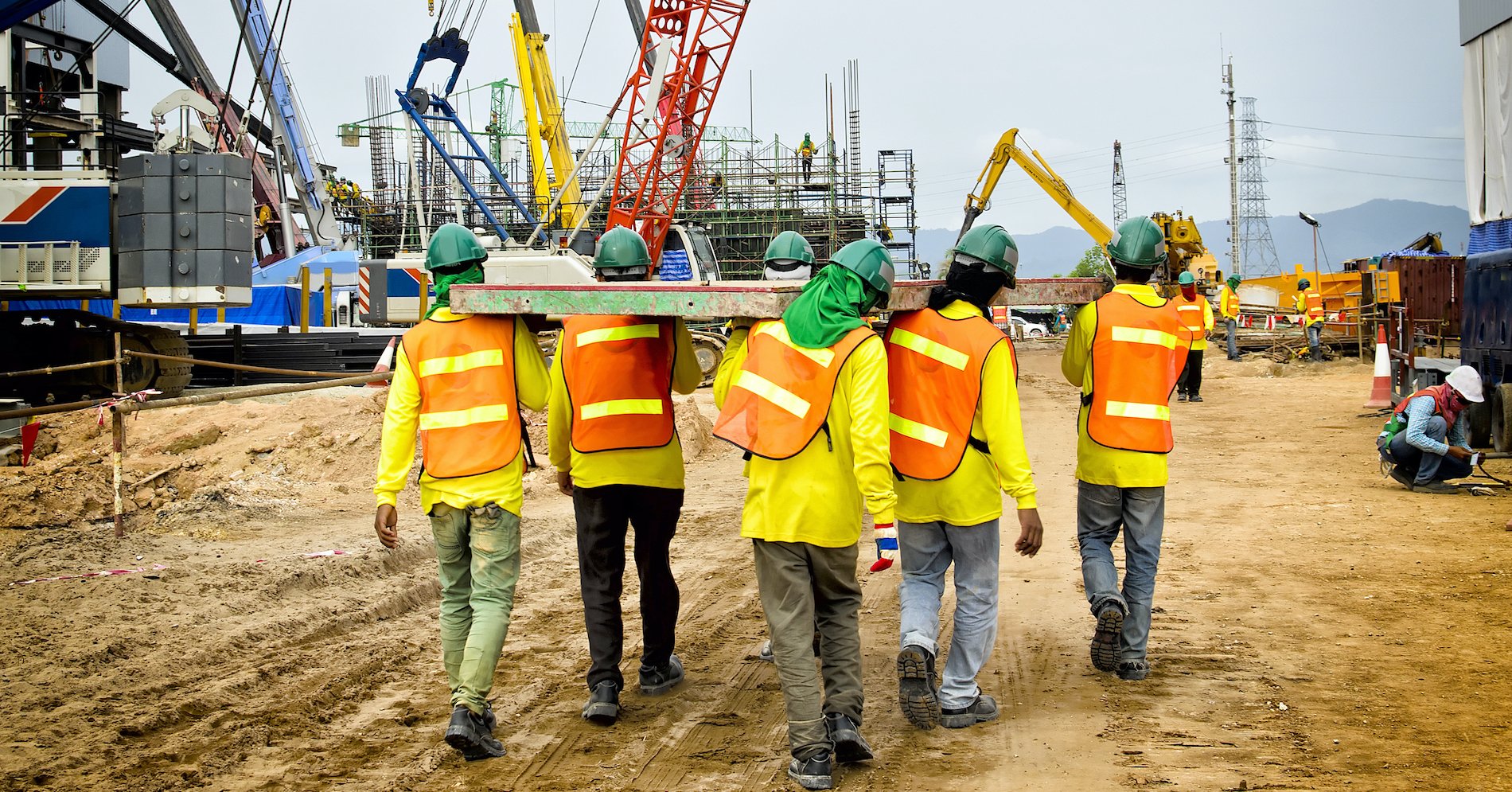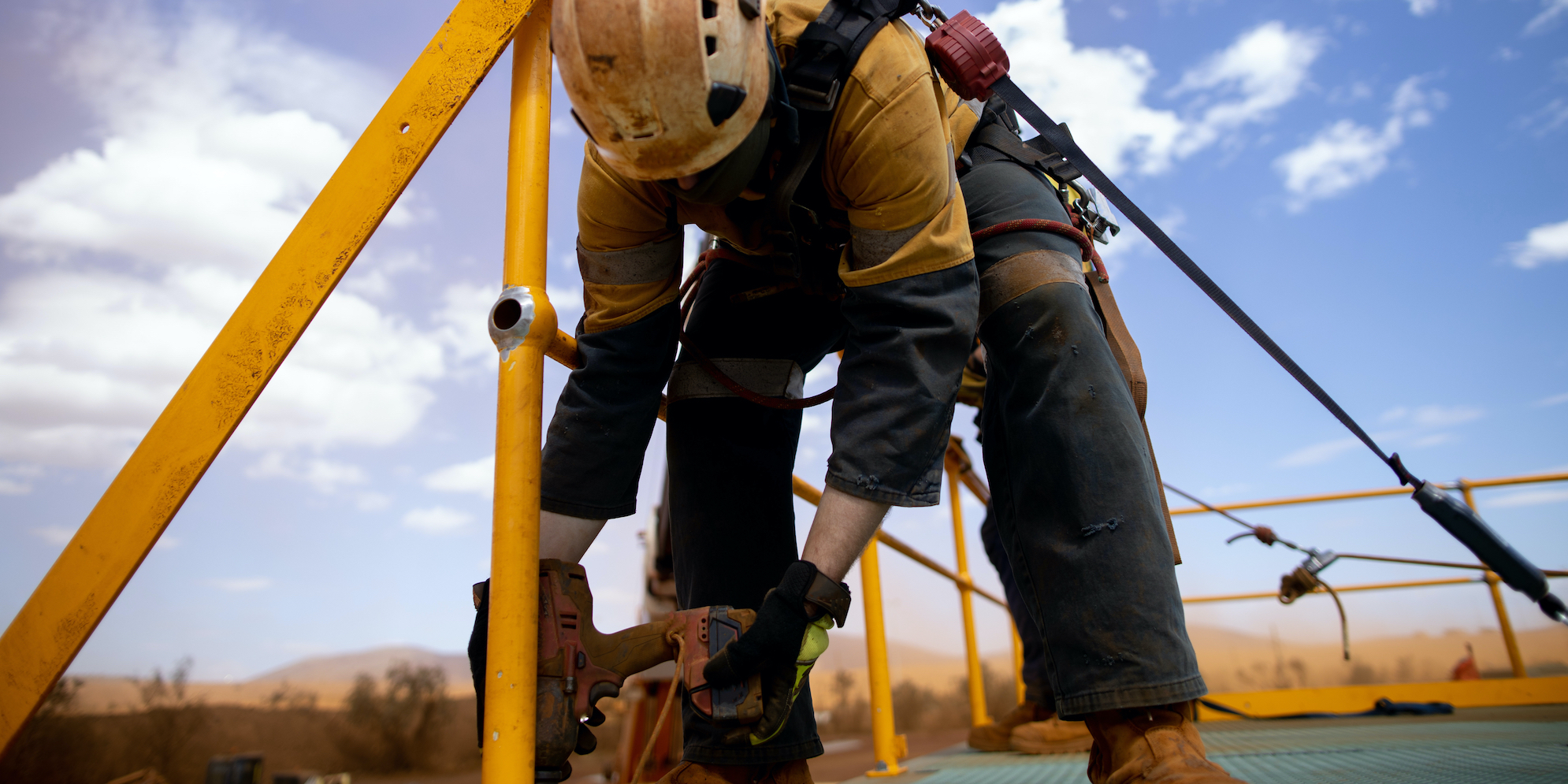Think back to when you were learning to drive a car. The chances are good that you were cautious, always using turn signals, fully stopping at all stop signs and traffic lights, and obeying the speed limit. Now think about your driving recently. Do you exercise the same level of caution? Or do you sometimes speed, change lanes abruptly, drive closely to the vehicle in front of you, or even use your cell phone?
This is an example of risk normalization, a phenomenon where risky or dangerous behaviors or practices gradually become acceptable over time. Driving today isn’t any less dangerous than it was, but you’re more comfortable with the risks, and you behave more boldly.
Risk normalization is common in construction work. Workers who are careful and precise when they first start their jobs—or even their days—may act unsafely over time. This could mean they stop wearing certain personal protective equipment (PPE), they don’t always use equipment as intended, or they don’t follow all safety rules and procedures.
Construction work is inherently dangerous. In fact, approximately 20 percent of private industry worker fatalities in 2019 were in construction, according to the Occupational Safety and Health Administration (OSHA). That’s why it’s so important to recognize and correct any behaviors like risk normalization that jeopardize worker safety.
Here, we share a few tips construction leaders can follow to stop risk normalization at their companies.
5 ways construction leadership can combat risk normalization
1. Be on the lookout for complacency
Eliminating complacency is a big part of incident prevention in construction. Workers don’t expect to be hurt or killed on the job, and they simply go through the motions, sometimes skirting the rules in the process.
There are plenty of signs that point to complacent behavior, including employees becoming disengaged, unproductive, and generally not caring about the quality of their work or meeting deadlines. When people are no longer interested in their work, they often become indifferent, which can cause injuries or even construction fatalities.
2. Lead by example
Construction workers look to their leaders for guidance. If you’re not following company rules, you send the message that doing so isn’t important.
You might not even realize it, but you could be practicing risk normalization yourself. Now that you’ve grown accustomed to your job, certain tasks you once took very seriously might be going somewhat by the wayside.
Take a hard look at your own behaviors—or ask another manager to do so—and be honest with yourself about any changes you need to make. When workers see you doing everything in your power to stick to the company’s construction safety management plan, they’ll follow suit.
Read: Create a Safety-First Culture to Prevent Worker Safety Incidents
3. Empower employees to speak up
You can’t be everywhere at once, so it’s possible risk normalization is happening out of your line of sight. In this case, other employees are privy to rules being broken, so you need them to say something.
Encourage this by ensuring anyone who comes forward that their complaint will be kept confidential. Take it a step further by implementing an anti-retaliation program.
OSHA cites five key elements to a successful anti-retaliation program including:
- ensuring management is fully onboard
- creating a system to listen to and resolve compliance and safety concerns
- implementing a system for receiving and responding to complaints
- providing employees and managers with anti-retaliation training
- ensuring thorough program oversight
When employees come to you with safety concerns, take them seriously and let them know you appreciate their willingness to say something. In the coming days and weeks, be transparent with the actions you took, so they know you actually did something with the information provided.
Despite the good intentions, it can also be wise to eliminate any programs that reward workers for having zero safety issues over a certain time period, as this can discourage people from speaking up. Instead, consider rewarding workers for behaviors like attending voluntary safety training.
Safety Leading and Lagging Indicators: What’s the Difference?
4. Conduct regular inspections
Don’t exclusively rely on OSHA inspections to catch risky safety behaviors among workers. OSHA has approximately one compliance officer for every 70,000 workers, so your sites probably aren’t visited too often.
Regular inspections are an important part of reducing risk normalization because they can catch safety hazards before a fatal injury occurs. Regularly reviewing adherence in areas like compliance to OSHA rules, PPE used by workers, and equipment and machinery allows you to ensure all safety precautions are being taken.
If you’re not sure you can be objective in an inspection, consider hiring a third-party to conduct one for you. Insights from someone outside your organization can highlight issues you have grown to accept as the standard, due to risk normalization.
Also see: 7 Ways to be More Proactive About Worker Safety
5. Make training a priority
Ensuring construction workers are properly trained will help reduce risk normalization because it can break bad habits before they start.
All new workers should receive extensive training prior to heading to the work site. This includes workers with extensive experience at other companies. This is important because it’s the only way to know for sure that workers understand how to do their jobs safely and correctly.
All employees should receive periodic refresher training. This is an easy way to highlight risk normalization because workers will see firsthand if any of their current behaviors are unsafe. Without continued training, they could continue doing work the wrong way, which could lead to an accident.
Risk normalization happens at every company. Even the best workers get comfortable in their jobs and often gradually slip into unsafe practices. Being aware of this issue and actively working to fight it is an important way to keep your construction team safe.
For more worker safety help, check out the blog “4 Common Predictive Leading Indicators.”

